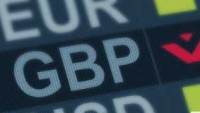 European stocks sold-off yesterday as dealers were still fearful about the slowdown in China.
European stocks sold-off yesterday as dealers were still fearful about the slowdown in China.
The update from Apple on Wednesday night that first-quarter revenue and gross margins are expected to be lower weighed on global equity sentiment. There has been a lot of chatter lately that China, and the rest of the wold is slowing down, and the announcement from the tech giant added to those fears. The FTSE 100 turned positive in the afternoon briefly, thanks to energy stocks, but the London market finished firmly in the red.
The declines in Europe were accelerated by the poor ISM manufacturing from the US. The December reading was 54.1 – the lowest in over two years. The report was a big drop off from the 59.3 reading in November, and it undershot the 57.7 reading that economists were anticipating. The sharp slowdown in activity spooked traders, and stoked fears that the US is slowing down too.
Chinese stocks rallied after Beijing confirmed that trade talks with the US would be held on the 7 and 8 of January. Adding to the announcement, the Caixin survey of Chinese services for December came in at 53.9, which was a slight improvement on the 53.8 reading in November. The positive update from China bucked the trend of negative news this week, and it prompted bargain hunting.
There was mixed employment numbers from the US yesterday. The ADP private employment report for December was 271,000, which was well above the 178,000 that economists were expecting, but the November update was revised from 179,000 to 157,000. The jobless claims report was 231,000, while dealers were expecting 220,000.
The US non-farm payrolls report will be released at 1.30pm (UK time) and the consensus estimate is 177,000. The unemployment rate is tipped to hold steady at 3.7%. Average earnings on a yearly basis are expected to cool to 3% from 3.1%, but on a monthly basis are expected to be 0.3%, up from 0.2%. Last month, dealers were afraid of the Federal Reserve being too aggressive, but now traders are wary of signs of cooling growth.
At the same time, Canada will report their jobs data. The unemployment rate is tipped to edge up to 5.7%, from 5.6%, and the employment change is anticipated to jump by 5,500. The headline and core inflation rates dipped recently, which points to weaker demand. The Bank of Canada will make their interest rate announcement next week, and today’s employment data is likely to influence the decision.
French and German service PMI reports will be announced at 8.50am (UK time) and 8.55am (UK time) and the dealers are expecting 49.6 and 52.5 respectively. Eurozone CPI will be announced at 10am (UK time) and the consensus estimate is 1.8%, which would be a fall from the 1.9% reading in November. Earlier this week we saw poor manufacturing figures from major eurozone countries, and there is a growing sense the currency bloc is cooling.
Some British consumers are curtailing their spending ahead of Brexit, and the lending figures this morning will be in focus. November mortgage approvals are expected to be 66,500 and total mortgage lending is forecast to be £3.95 billion.
Oil has had a volatile week too as robust production updates from Russia and the US were counteracted by reports that Saudi Arabia will reduce exports. The Energy Information Administration oil and gas inventory reports will be announced at 4pm (UK time), and investors are expecting a 2.3 million barrel draw, and a 2.26 million barrel build respectively.
EUR/USD – has been diving lower since late September and if it holds below the 1.1510/00 region, it could pave the way for the 1.1215 area to be retested. A move to the upside could run into resistance in the 1.1510/00 area.
GBP/USD – has fallen back into its wider downward trend that has been in place since September, and support might come into play at 1.2476. A rally might run into resistance at 1.2815.
EUR/GBP – has been broadly moving higher since mid-November, and if the positive move continues it might target 0.9100. A pullback might find support at 0.8900 – 100-day moving average.
USD/JPY – has been edging lower since October, and if the negative move continues, support might be found at 104.63. A bounce back might run into resistance at 111.06 – 200-day moving average.













